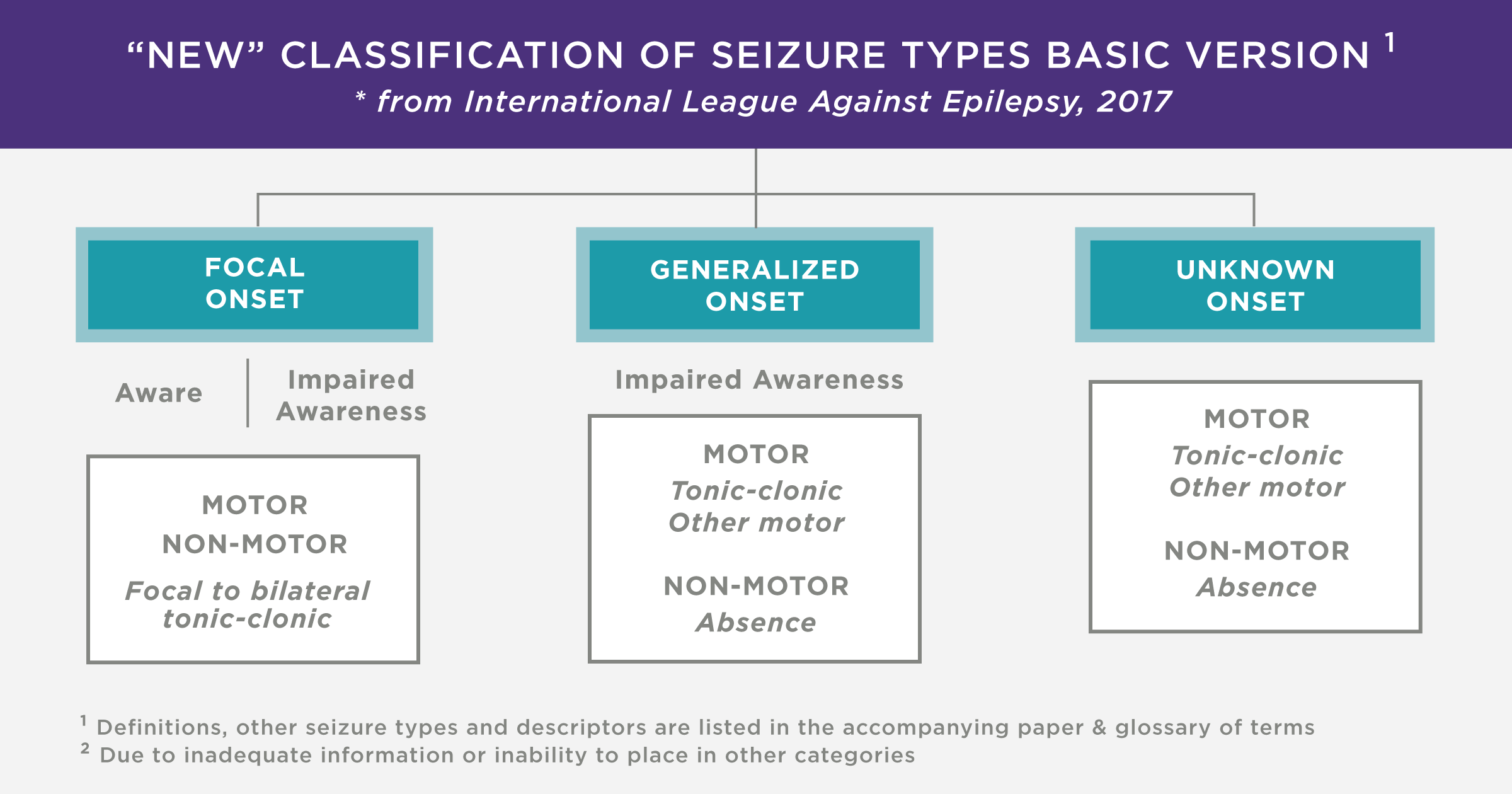Seizures appear to be a common finding when the irregular growth of blood vessels involve the brain.
The following table provides a basic classification of seizure types:
 There are now 3 major groups of seizures. (Epilepsy Foundation)
There are now 3 major groups of seizures. (Epilepsy Foundation)
An “aware” onset describes a seizure instance in which the person is awake and aware during the seizure. An “impaired awareness” onset differs in that the person is confused or their awareness is affected in some way.
How seizures look like
Seizures in babies with SWS are usually focal seizures, which are far from a generalized shaking of the body. They are called focal because they start in one area or group of cells in one side of the brain. They happen to be more like twitching of the hand or the foot, the eye deviated toward one side and bouncing, one side of the mouth drawn to the side and twitching. They can last even several minutes. In some instances, the head can turn on one side while one side of the body is shaking. A more rare kind is like spasm, a sudden jerk forward of the head and upper body.
SWS tends to stabilize, in terms of blood flow and metabolism, around four to five years of age, up until the puberty, when the body experiences another big change and can trigger new issues. 75% of patients with brain involvement will have onset of their seizures within one year of life, 85%-90% within two years of life, 10% or so after two years age. The reality is that it can happen anytime during childhood, adolescence, or adulthood (even late age and for the first time!). Also, they occur equally in boys and girls.
Seizures/epilepsy is treated with anti-seizure medication. The goal of medication is complete seizure control to decrease chances of cognitive and or neurological decline. Most frequently patients require a couple of seizure medications plus a low dose aspirin to control their seizures. A smaller number of patients have seizures easier to control and another small number with seizures very difficult to control (thus requiring alternative seizures medications or even a surgical intervention).
Some patients can even come off of seizure medications later in childhood.
Another important fact to consider when it comes to babies and seizure medications is that the amount of medicine is based on the baby’s weight. Since they tend to grow quite a lot during their first years of life, it’s important to recalculate the dosage on every increase of 5 to 6 pounds. If babies are kept on the same dosage for too long, such as 9 months or 1 year, it’s very likely, if not certain, that they will start seizing again. The ratio considered for the dosage recalculation is 1 mg per 1 kg.
What about Aspirin
As odd as it may sound, the most common analgesic used for pain relief is also used to prevent (to some extent) some types of seizures. Why? Because aspirin, or acetylsalicylic acid, is also a blood thinner. A low dose aspirin is very safe, although not 100% safe. On one side there’s a very low chance of allergic reaction. On the other side, since it thins the blood a little bit, if the baby is involved in a fall or accident, he would be expected to bleed more.
Neurologists may prescribe it as a preventative medication when there's brain involvement.